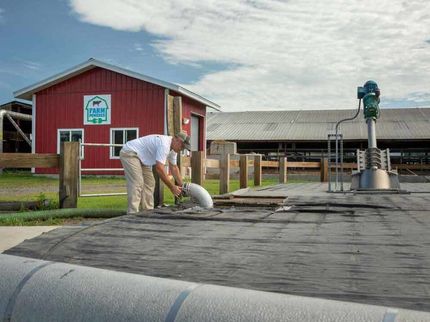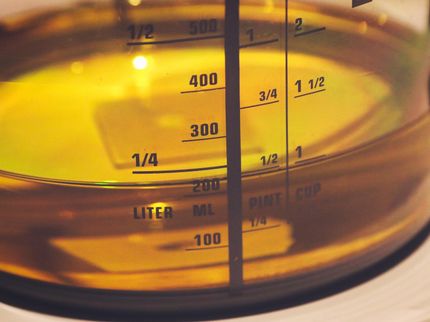Turning food waste into future fuels
One third of the world's food is wasted each year, with around 7.6 million tonnes wasted in Australia alone. Harnessing this food waste is a major challenge that Murdoch research is working to address.

Food waste at the Richgro anaerobic digestion facility
Murdoch University
If food waste was a country it would be the third largest greenhouse gas emitter, behind the USA and China, according to the Department of Agriculture, Water and the Environment.
Developing interventions to arrest waste is a priority in achieving United Nation’s Sustainable Development Goals on climate action and responsible consumption. One promising area of progress is biorefining.
Second generation biorefineries can use food waste as feedstock to sustainably produce biobased products.
“Current estimates indicate that between 1.3 and 1.6 billion tonnes is produced each year, so the recycling and recovery of value from food waste is of global importance,” said Chris Bühlmann, who has recently published research into harnessing it for energy production.
This work was done in collaboration with Dr Bede Mickan, Dr Stephan Tait, Professor Parisa Bahri, and Richgro Garden Products.
We see tremendous opportunity in anaerobic digestion – a biological process which breaks down food wastes into biogas, a mixture of methane and carbon dioxide – which can use food waste to generate renewable energy.”
Chris Bühlmann
Bühlmann’s research into developing a food waste biorefinery looked specifically at how to improve the yield of food waste processing by capturing lactic acid.
Lactic acid is used in the pharmaceutical, food and textile industries, as well as in the production of biodegradable plastics – potentially using one environmental problem to solve another.
While recent research has shown converting food waste into lactic acid and biogas is economically feasible, the overall impact of generating lactic acid on downstream biogas formation has not been investigated until now.
“We have explored the technical feasibility for lactic acid recovery following the fermentation of food waste, prior to biogas formation,” explained Professor Bahri.
“What we discovered was that lactic acid recovery from fermentation is both technically feasible and commercially attractive, with the residues that remain after the lactic acid recovery process able to be used to make biogas.”
The research looked at three scenarios; lactic acid fermentation; biogas production; and sequential lactic acid fermentation and biogas production from fermentation residues.
“What we’ve shown is that an integrated biorefinery process – one that produces both lactic acid and biogas – presents an optimal use of energy and materials than producing just one of these products,” said Bühlmann.
He is a PhD student at Murdoch University, studying under the supervision of Professor Bahri who is the Head of Engineering and Energy and President of Academic Council at Murdoch and a key researcher at the Centre for Water, Energy and Waste, part of the Harry Butler Institute.
Dr Bede Mickan is a research fellow at the University of Western Australia, School of Agriculture and Environment. Dr Stephan Tait is a senior research fellow at the University of Southern Queensland, Centre for Agricultural Engineering.
Most read news
Other news from the department science

Get the food & beverage industry in your inbox
By submitting this form you agree that LUMITOS AG will send you the newsletter(s) selected above by email. Your data will not be passed on to third parties. Your data will be stored and processed in accordance with our data protection regulations. LUMITOS may contact you by email for the purpose of advertising or market and opinion surveys. You can revoke your consent at any time without giving reasons to LUMITOS AG, Ernst-Augustin-Str. 2, 12489 Berlin, Germany or by e-mail at revoke@lumitos.com with effect for the future. In addition, each email contains a link to unsubscribe from the corresponding newsletter.

























































